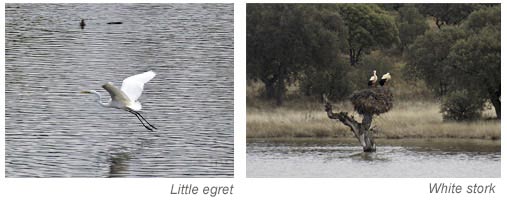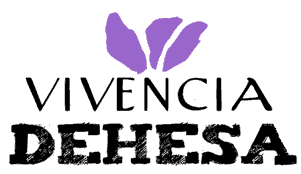
“Learn to speak with Nature. Learn to assess her accurately. Ask yourself what she offers you.” Sepp Holzer
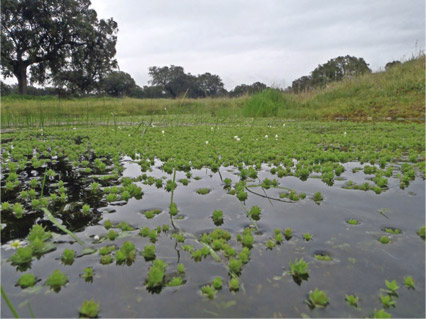 ‘Vivencia Dehesa’ is the result of years of dedicated work to conserve and promote the pasture landscape. Sepp Holzer, permaculture expert, began in Valdepajares de Tajo an exceptional hydrological reform in 2005 due to the decline in the number of Oak trees and the impoverishment of the ground. A new strategy was adopted, creating new water reserves with the aim of retaining humidity and creating microclimates. Valdepajares de Tajo is today revitalized pastureland, the increase in the biodiversity has been exceptional. The long summers of Extremadura are now much more manageable thanks to the constant presence of water in the expansive ponds. Thanks to the rich succession of lagoons, Oak forests, rocky outcrops, undergrowth and grasslands, Valdepajares de Tajo offers the best of each biotope associated with the Mediterranean forest. The mark which makes ‘Vivencia Dehesa’ unique is its commitment to the use of water as a renewing agent for landscapes. In this way, Valdepajares de Tajo is revealing itself today as special pastureland, where water plays the key role.
‘Vivencia Dehesa’ is the result of years of dedicated work to conserve and promote the pasture landscape. Sepp Holzer, permaculture expert, began in Valdepajares de Tajo an exceptional hydrological reform in 2005 due to the decline in the number of Oak trees and the impoverishment of the ground. A new strategy was adopted, creating new water reserves with the aim of retaining humidity and creating microclimates. Valdepajares de Tajo is today revitalized pastureland, the increase in the biodiversity has been exceptional. The long summers of Extremadura are now much more manageable thanks to the constant presence of water in the expansive ponds. Thanks to the rich succession of lagoons, Oak forests, rocky outcrops, undergrowth and grasslands, Valdepajares de Tajo offers the best of each biotope associated with the Mediterranean forest. The mark which makes ‘Vivencia Dehesa’ unique is its commitment to the use of water as a renewing agent for landscapes. In this way, Valdepajares de Tajo is revealing itself today as special pastureland, where water plays the key role.
The Outcrop:
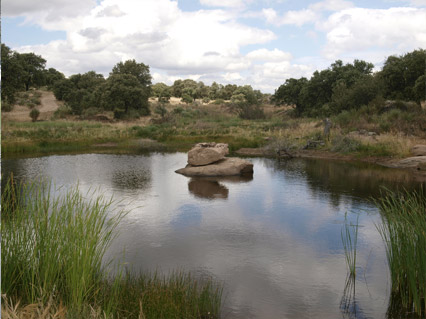 What we call the “Rosary of Ponds” runs between granite compositions, ten interconnected lagoons form a corridor. It is the landscape of the estate with the most variation during the year; the rise and fall of the water level, the colour of the moss and lichens among the rocks, the flowering of the brush, etc. makes the outcrop look like a different space each season. It is the preferred area for Roe deer, a breeding ground for amphibians and the ideal place to see Ocellated lizards basking in the sun.
What we call the “Rosary of Ponds” runs between granite compositions, ten interconnected lagoons form a corridor. It is the landscape of the estate with the most variation during the year; the rise and fall of the water level, the colour of the moss and lichens among the rocks, the flowering of the brush, etc. makes the outcrop look like a different space each season. It is the preferred area for Roe deer, a breeding ground for amphibians and the ideal place to see Ocellated lizards basking in the sun.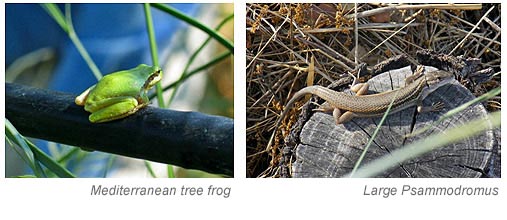
The big lagoons:
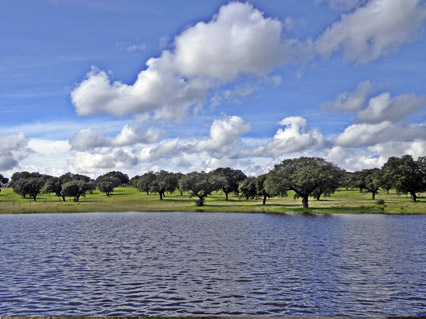 It is, without a doubt, the area of big lagoons, which distinguishes and personalizes the pastureland of Valdepajares de Tajo. Serving as border or meeting point between the pastureland and mountain, the five big lagoons of Valdepajares de Tajo are the territory of herons, marsh harriers, little egrets, common spoonbills and the delicate white storks.
It is, without a doubt, the area of big lagoons, which distinguishes and personalizes the pastureland of Valdepajares de Tajo. Serving as border or meeting point between the pastureland and mountain, the five big lagoons of Valdepajares de Tajo are the territory of herons, marsh harriers, little egrets, common spoonbills and the delicate white storks. 